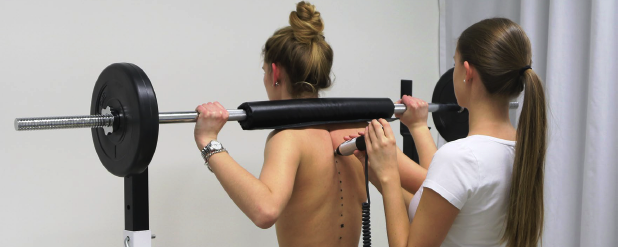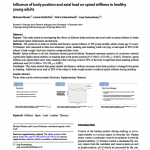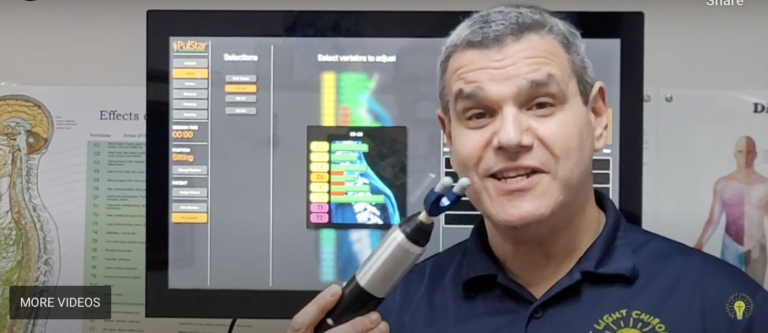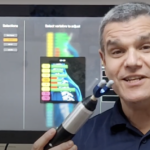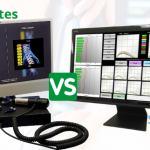Fig.1, above: Measurement set-up, standing, and standing with 50% additional axial load.
Research to reduce lower back pain among Astronauts in space
You might remember that back in 2016, Chiropractors from the University of Zurich conducted a pilot study sponsored by the European Space Agency using the PulStar, to examine spinal stiffness in space Now, three years later, these same researchers followed-up their original study to include the influence of body position and axial load on spinal stiffness in healthy young adults.
The ESA chose this topic to help them understand why astronauts have reported increased spinal stiffness in space and on the Moon. They believe it is possibly due to the back muscles contracting to keep the spine in place—the muscles kick-in to take over the job of gravity on Earth. This study is part of an ESA research series to help them understand back pain away from Earth and at home.
Research methodology overview
In the study, they tested 100 young adults (mean age of 23) in three positions—prone, standing and standing while carrying a load equal to 50% of the subject’s body weight. Researchers used the PulStar to measure spinal stiffness. They found that spinal lumbar and thoracic stiffness increases when body position is changed from prone to standing, but an additional axial load of 50% of the subject’s body weight results in reduced spinal stiffness during standing. Now, the agency can use this information and apply their findings to different levels of gravity—even space!
A computer-assisted analytic device, the PulStar, was used to measure
posterior-to-anterior spinal stiffness
They chose to use the PulStar because of its advanced analysis function, which measures stiffness in the spine by using computerized technology and an impulse head to measure resistance. This is just one of dozens of published research studies that have utilized the PulStar in recent years.
“This is evidence that the PulStar is not just useful in analyzing and treating the spine but has also found a place in basic research where questions such as the influence of zero gravity on spinal stiffness may be examined,” says Christian Evans, Sense Technology President. “Objective answers to this question alone cannot be obtained without measurement instruments like the PulStar, and if we had not developed the PulStar instrument, a separate research and development program would have been necessary to create instrumentation to perform the experiments undertaken by the European Space Agency.”
Read the full study published by the European Spine Journal.
Fig. 1: ESA photograph of measurement set-up, in “Influence of body position and axial load on spinal stiffness in healthy young adults”, available in European Spine Journal, first online 12.18.19.


